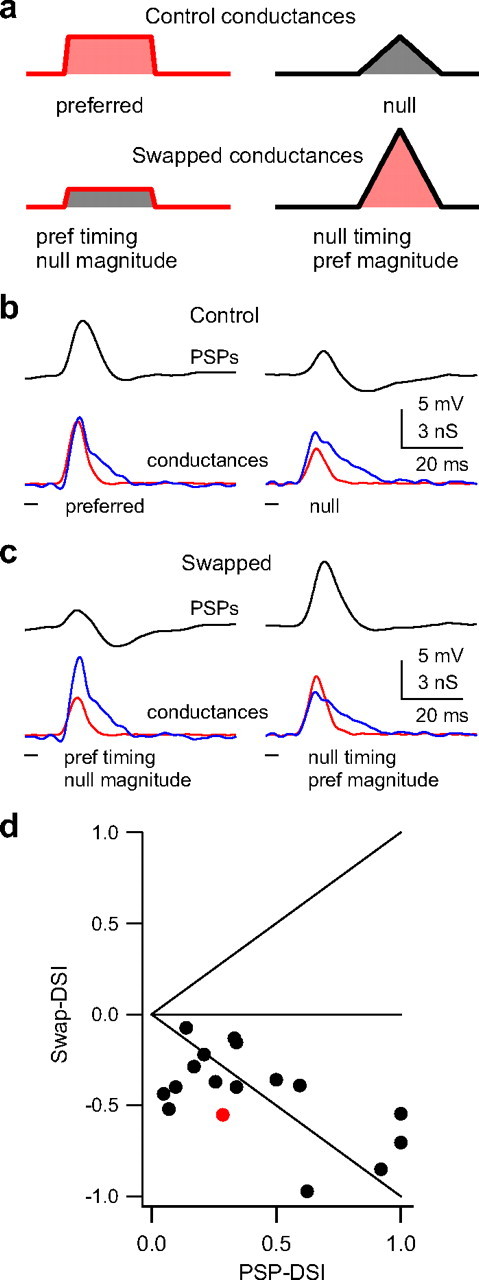Figure 7.

Magnitude is more important than timing for generating PSP directionality. To determine the relative contribution of magnitude asymmetries compared with temporal asymmetries in generating directional selectivity in the PSPs, we manipulated the conductance waveforms and tested them in model cells. a, A schematic depicting how the magnitudes of the original conductance waveforms (top) were swapped (bottom). One swapped conductance had the preferred timing (latency and shape) and the null magnitude (area under the curve; bottom left). The other had the null timing and the preferred magnitude (bottom right). b, c, We swapped magnitudes of both inhibitory and excitatory conductances, and the resulting swapped conductances were injected into the same model cell as the control conductances. The swapped conductances with the preferred magnitudes (c, right) evoked a larger PSP compared with those with the null magnitudes, showing that magnitude asymmetries were more important than timing in generating PSP directionality. PSPs in black, excitation in red, and inhibition in blue. d, We compared directionality in swap-DSIs with the directionality in PSP-DSIs. Swap-DSI > 0 indicates that timing was more important than magnitude; swap-DSI < 0 indicates that magnitude was more important than timing; swap-DSI = 0 indicates equal importance of both timing and magnitude. Points on the unity lines would indicate that directionality was determined by only timing (top diagonal) or only magnitude (bottom diagonal). Example cell shown in red.
